I live in Craughwell, Co Galway. I’m originally from Co Louth, but I moved here about 13 years ago. I have two boys, Ewen (13) and Harry (11). I’m a woodwork teacher and I spent about 10 years working in secondary schools in both Ardee and Galway.
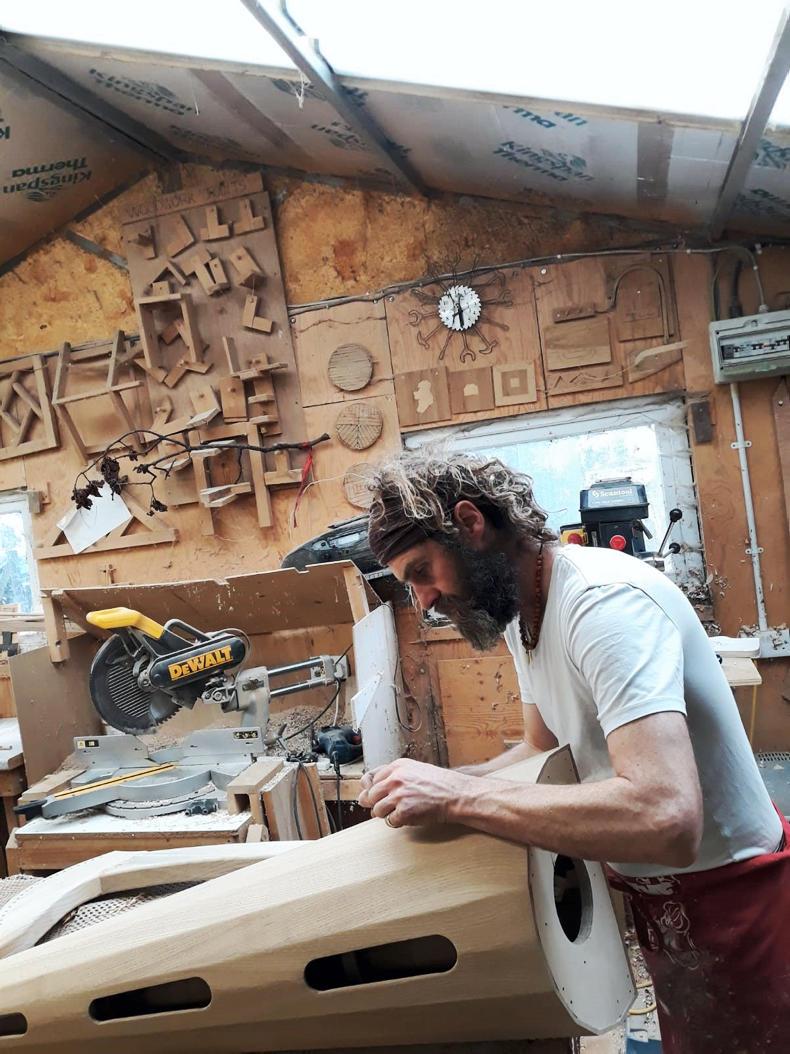
Brian makes bespoke, handmade harps from native Irish trees.
I finished up teaching and was looking for different avenues that I could take. My partner at the time was a musician and music teacher. She was teaching very small children and kids of up to nine years old how to play different instruments and she needed a harp for her classes.
I offered to buy a small one for her, but I couldn’t find anywhere in Ireland that sold small harps and that’s what intrigued me.
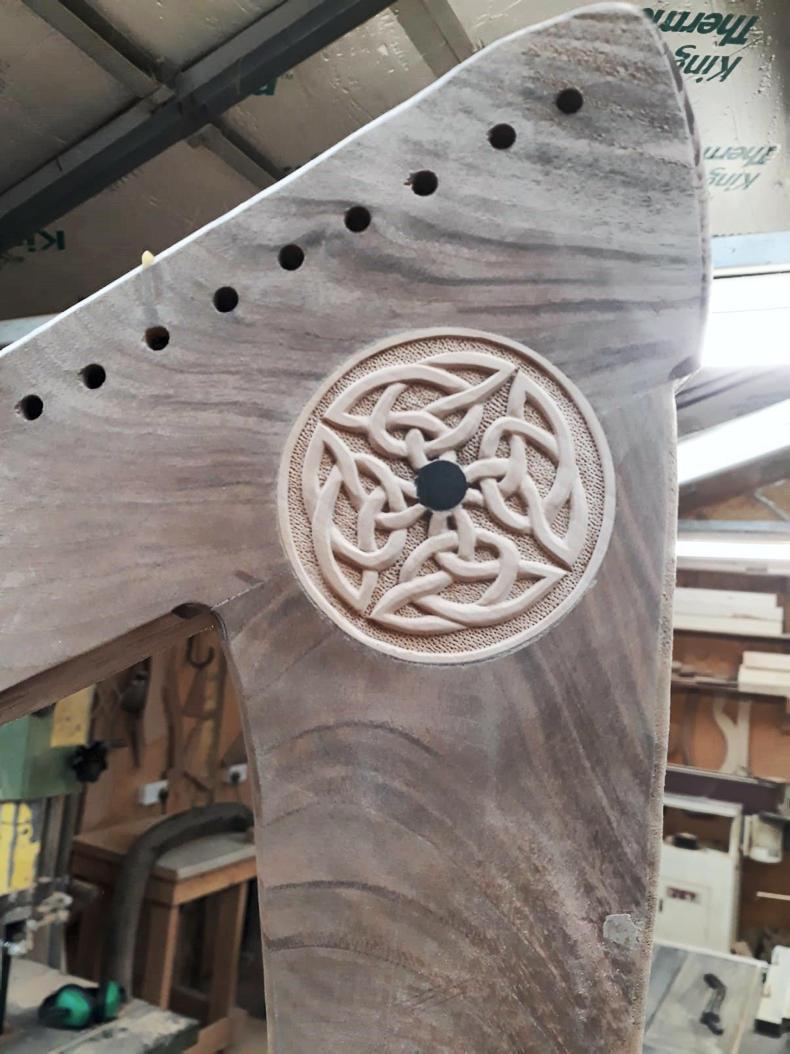
Richard Cunniffe completes the carving work on the harps.
Places were all selling the big professional 34 string harps, but she needed a little 14 string for her playschool kids to manage. You could buy them in China and Japan, but I wasn’t willing to buy an Irish instrument from anywhere else.
It was then, in 2012, that I thought I’d give it a go. I went online and got different shapes, designs and rough measurements to start. I contacted a local harpist named Úna Ní Fhlannagáin, who lives here in Craughwell, and I asked her advice on strings and other bits and pieces.
My first one sounded OK and looked OK, so I made a few for the school. Parents started asking me for them, as the children couldn’t understand why they couldn’t take them home. It literally spiralled from there.
Homegrown
There was very little about harp-making online, so I went to my first harp festival in 2012 in Tourmenfeckin, Co Louth. I brought my little harps and a couple of people laughed at me, but one guy didn’t – the late Colm Ó Meachair.
He gave me loads of sound advice on stringing, timbers and measurements, so then I advanced to the bigger harps. My big thing is that I only make harps out of native grown wood – it has to come from Ireland.
I made one out of mahogany, but it didn’t feel right using timber that came from Africa when we have gorgeous timber here. Everything I use is 99% windfall and I will only take trees that have come down naturally.

All the wood is locally sourced and has fallen naturally.
There’s loads of stuff available, except for walnut and elm, because they’re so rare. My favourite wood to work with is elm, but our own ash is a lovely wood to work with. All the different timbers have their own unique sound. They all produce their own voice and have their own different tones. You try and encourage people to choose the tone that suits them and not the wood. I don’t do the carvings myself because of the time constraints, so Richard Cunniffe from Athenry does that for me.
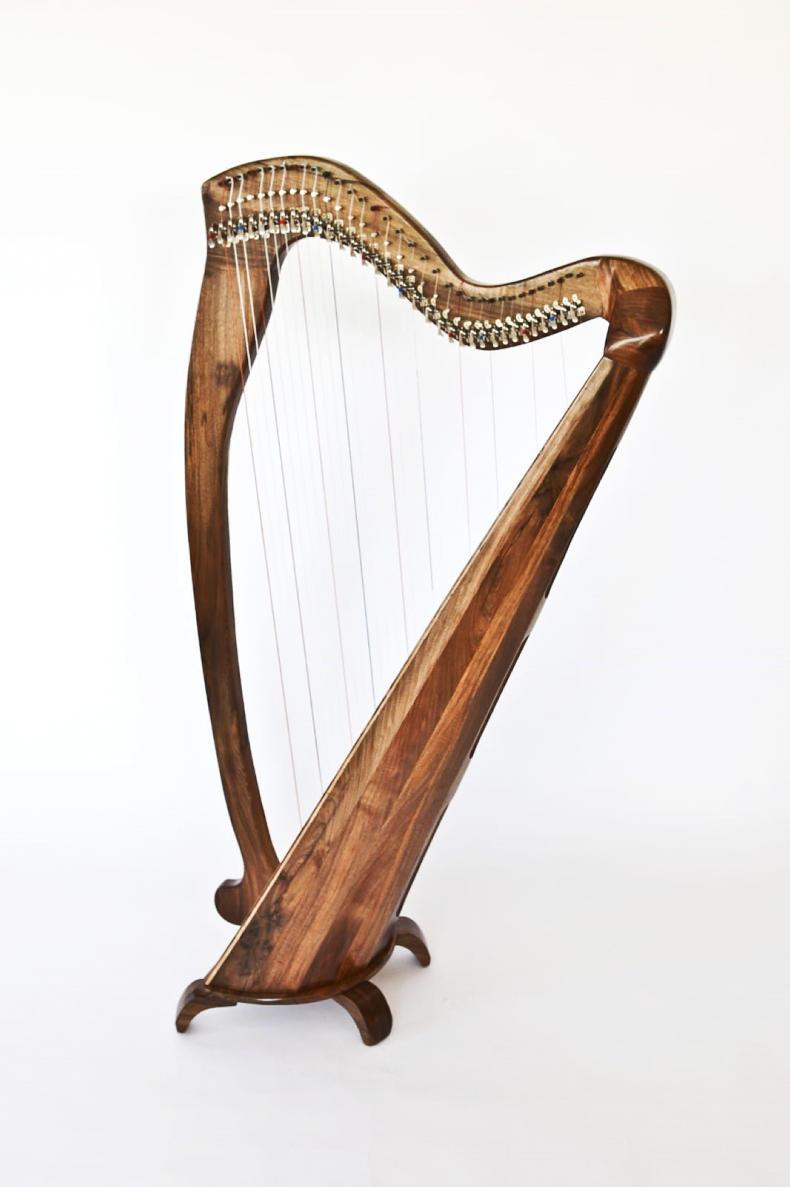
One of Brian's creations.
The coloured ones would be made from Sycamore and then dyed to enhance the grain, not like paint. There was a lot of trial and error involved in making the harps initially, so many times I would be thinking of throwing in the towel, but I did love the challenge of it.
I’m just about to finish a full-size bog oak, with a bog pine soundboard. I’m going to put that to auction when it’s finished. I had it carbon dated and it dates back to 4233BC, so it’s 6,500 years old.
That came from a bog in nearby Woodlawn, Ballinasloe. I must admit, I didn’t waste a bit, I still have the shavings and sawdust here, as it’s useful for repairs, inlay work or carvings. You can glue in the dust to make a pattern too.
Classes
I set up a woodwork room here last year, because I homeschool my two boys. Ewan has started secondary school now, but Harry is still at home, so I have 12 kids here every Tuesday coming to do woodwork.
I always loved teaching and passing on the skills. I felt that part of life was missing. Being a harp maker, you’re isolated. It’s a massive contrast from having classes of 24 people all day, to having a workshop on your own.

The coloured harps are made from sycamore and then dyed to enhance the grain.
Having the classes is a nice addition for my own kids and they get to be part of a group class as well. My boys finished their own harps last year, but the class is making coffee tables, stools and things like that. I also ran night classes before Christmas for about eight weeks.
The harps are made using hand tools. I do use the bandsaw for 50% of it, but they’re all hand finished, scraped and planed. You could set it up to be more automated, but I feel that it’s cheating my customers a bit, it’s just not for me.

Brian's son Ewan learns how to make his own harp .
I try not to take an order over the phone, I encourage people to come here and see the way I live and show them the timber. Right from the start, they can pick it up and see the grain, which is why I don’t export too much. I do have some across Europe, but I love the fact that they’re local and Irish. I love my way of life and I plan to continue making the harps for as long as I can.
Read more
My Country Living: 'I'll carry on making my work about agriculture'
My Country Living: 'I absolutely love cows, I love everything to do with them'
I live in Craughwell, Co Galway. I’m originally from Co Louth, but I moved here about 13 years ago. I have two boys, Ewen (13) and Harry (11). I’m a woodwork teacher and I spent about 10 years working in secondary schools in both Ardee and Galway.

Brian makes bespoke, handmade harps from native Irish trees.
I finished up teaching and was looking for different avenues that I could take. My partner at the time was a musician and music teacher. She was teaching very small children and kids of up to nine years old how to play different instruments and she needed a harp for her classes.
I offered to buy a small one for her, but I couldn’t find anywhere in Ireland that sold small harps and that’s what intrigued me.

Richard Cunniffe completes the carving work on the harps.
Places were all selling the big professional 34 string harps, but she needed a little 14 string for her playschool kids to manage. You could buy them in China and Japan, but I wasn’t willing to buy an Irish instrument from anywhere else.
It was then, in 2012, that I thought I’d give it a go. I went online and got different shapes, designs and rough measurements to start. I contacted a local harpist named Úna Ní Fhlannagáin, who lives here in Craughwell, and I asked her advice on strings and other bits and pieces.
My first one sounded OK and looked OK, so I made a few for the school. Parents started asking me for them, as the children couldn’t understand why they couldn’t take them home. It literally spiralled from there.
Homegrown
There was very little about harp-making online, so I went to my first harp festival in 2012 in Tourmenfeckin, Co Louth. I brought my little harps and a couple of people laughed at me, but one guy didn’t – the late Colm Ó Meachair.
He gave me loads of sound advice on stringing, timbers and measurements, so then I advanced to the bigger harps. My big thing is that I only make harps out of native grown wood – it has to come from Ireland.
I made one out of mahogany, but it didn’t feel right using timber that came from Africa when we have gorgeous timber here. Everything I use is 99% windfall and I will only take trees that have come down naturally.

All the wood is locally sourced and has fallen naturally.
There’s loads of stuff available, except for walnut and elm, because they’re so rare. My favourite wood to work with is elm, but our own ash is a lovely wood to work with. All the different timbers have their own unique sound. They all produce their own voice and have their own different tones. You try and encourage people to choose the tone that suits them and not the wood. I don’t do the carvings myself because of the time constraints, so Richard Cunniffe from Athenry does that for me.

One of Brian's creations.
The coloured ones would be made from Sycamore and then dyed to enhance the grain, not like paint. There was a lot of trial and error involved in making the harps initially, so many times I would be thinking of throwing in the towel, but I did love the challenge of it.
I’m just about to finish a full-size bog oak, with a bog pine soundboard. I’m going to put that to auction when it’s finished. I had it carbon dated and it dates back to 4233BC, so it’s 6,500 years old.
That came from a bog in nearby Woodlawn, Ballinasloe. I must admit, I didn’t waste a bit, I still have the shavings and sawdust here, as it’s useful for repairs, inlay work or carvings. You can glue in the dust to make a pattern too.
Classes
I set up a woodwork room here last year, because I homeschool my two boys. Ewan has started secondary school now, but Harry is still at home, so I have 12 kids here every Tuesday coming to do woodwork.
I always loved teaching and passing on the skills. I felt that part of life was missing. Being a harp maker, you’re isolated. It’s a massive contrast from having classes of 24 people all day, to having a workshop on your own.

The coloured harps are made from sycamore and then dyed to enhance the grain.
Having the classes is a nice addition for my own kids and they get to be part of a group class as well. My boys finished their own harps last year, but the class is making coffee tables, stools and things like that. I also ran night classes before Christmas for about eight weeks.
The harps are made using hand tools. I do use the bandsaw for 50% of it, but they’re all hand finished, scraped and planed. You could set it up to be more automated, but I feel that it’s cheating my customers a bit, it’s just not for me.

Brian's son Ewan learns how to make his own harp .
I try not to take an order over the phone, I encourage people to come here and see the way I live and show them the timber. Right from the start, they can pick it up and see the grain, which is why I don’t export too much. I do have some across Europe, but I love the fact that they’re local and Irish. I love my way of life and I plan to continue making the harps for as long as I can.
Read more
My Country Living: 'I'll carry on making my work about agriculture'
My Country Living: 'I absolutely love cows, I love everything to do with them'











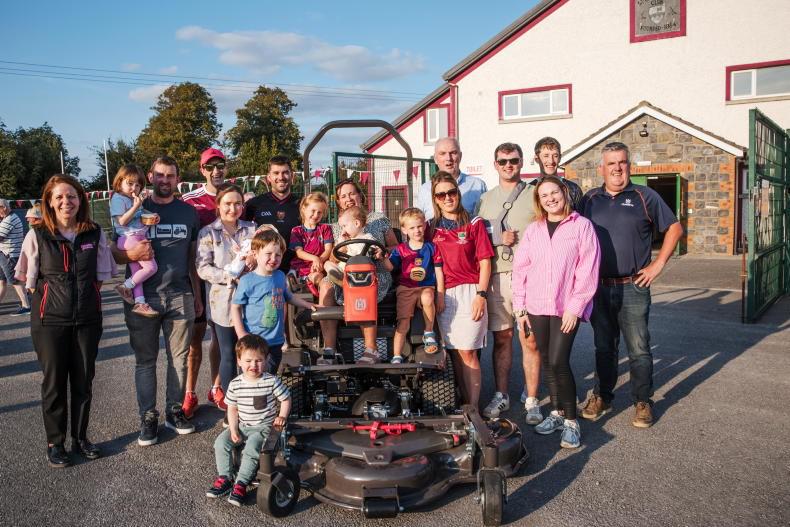

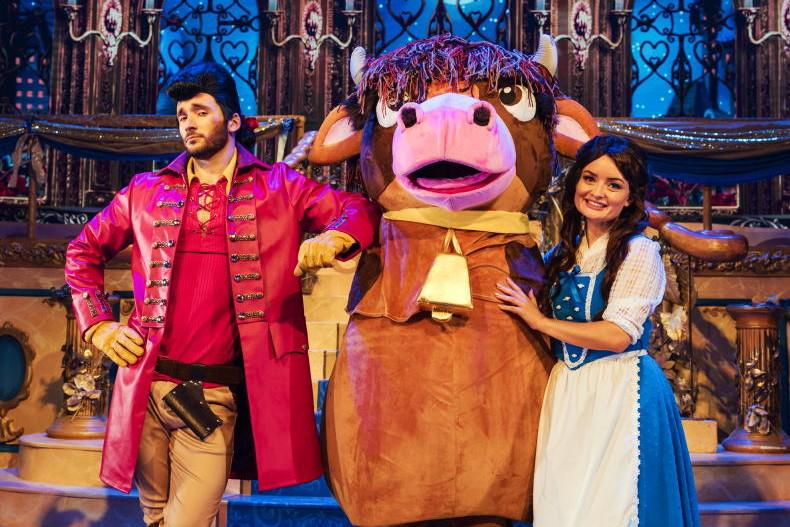

SHARING OPTIONS